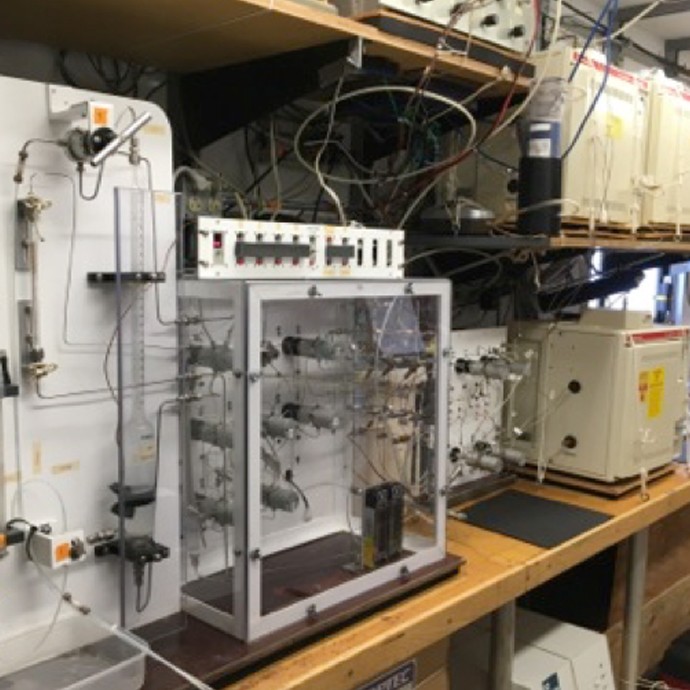Photo Gallery Story
Originally published on the I07 GOSHIP Blog. Author: Katey Williams
Hi! My name is Katey Williams and I’m working as a CFC analyst with Bonnie Chang and Chuck Kleinwort in the CFC lab aboard the Ronald H. Brown.
What are CFC’s ?
CFC stands for Chlorofluorocarbons. As the name suggests, these are chemicals that contain chlorine, fluorine, and carbon atoms. CFCs exist as a gas in both the atmosphere and dissolved in the ocean. These chemicals don’t occur naturally though. They were first manufactured in the 1930s as a non-toxic refrigerant. Older refrigerators used to use toxic gases as refrigerants. However, after a series of fatal accidents due to refrigerators leaking toxic chemicals, the need for a non-toxic refrigerant was recognized. So CFCs were invented. They worked well and were massively produced in the 1960s in refrigerators, automobiles, air conditioner and aerosols.
Unfortunately, the seemingly perfect chemical came with a catch. Even though CFCs are non-toxic humans, they can cause some serious damage when they enter the upper atmosphere. The upper atmosphere contains the ozone layer, which protects earth by absorbing harmful ultraviolet radiation from the sun. Exposure to ultraviolet radiation can cause mutation in plants, animals, and humans, and can lead to higher rates of cancer and immune system problems. Once it was discovered that CFCs were creating holes in the ozone layer, governments started to ban the production and usage of CFCs. Since 1996, industries have phased out CFCs and the amount of CFCs in the atmosphere has started to decline.
What do CFCs measure in the ocean’s water column and why these measurements important?
CFCs may not have made great refrigerant chemicals, but what they do make is great ocean tracers. Even though CFCs have been phased out of industry, they still exist as a gas in the atmosphere. When the gases of the atmosphere interact with the surface of the ocean, some of the CFCs dissolve into the ocean and stay there. As these water masses travel around the ocean and throughout the water column, they take the CFCs with them. CFCs act like a dye in ocean currents that scientist can measure and track. Determining the age and the amount of CFCs in the water column can tell us about the rates and pathways ocean circulation and mixing patterns.
How are CFC measured?
Extracting CFCs out of the water column starts with taking water samples from the CTD. We use giant glass syringes to extract water out from the CTD bottles. Since there’s a higher concentration of CFCs in the air in comparison to the ocean, the water sample within the syringe has to be free of air bubbles. Otherwise the amount of CFCs in the water sample won’t be accurate.
After we take our water samples with the syringes, we take them to the CFC lab on the ship to analyze. The CFC lab has a system set up that extracts the CFCs out of the water sample and then runs the gases through a gas chromatogram. The gas chromatogram measures the concentration of CFCs in each of the water samples.
We’re two weeks into the cruise and have already analyzed over 500 water samples! There will be many more to come as we continue to travel throughout the Indian Ocean, measuring CFCs and tracing ocean currents one sample at a time.
Image Captions
From Left:
- Katey Sampling CFCs in Water. Photo Credit: NOAA.
- CFC Lab Onboard the Ronald H. Brown. Photo Credit: NOAA.
- Chuck at the CFC Lab Control Center Onboard the Ronald H. Brown. Photo Credit: NOAA.
- Bonnie Sampling CFCs to study ocean movement. Photo Credit: NOAA.
- Katey Injecting Samples into the Gas Chromatography Machine. Photo Credit: NOAA.





